- Home
- Herbie Brennan
Through the Wardrobe Page 10
Through the Wardrobe Read online
Page 10
But this level of darkness, whether or not it involves food, is rare in the Narnia books. What are much more common are flashes or hints of deeper meaning hidden inside the outer semblances of the food—beneath the gleam of the salmon, as it were, or more like the light seen through the wine than the wine itself. And though much has been said about what religious symbolism might or might not be hiding (or hidden) behind the characters and situations in the Narnia books, a broader issue sometimes gets pushed off to one side: how the novels might express the way Lewis felt about how religion could interact and coexist with everyday life. Lewis loved the physical world of the five senses as much as he loved the world of the “inner sense” of faith: for him they were part of a seamless continuum. He didn’t mind mocking (though genially enough) those who unwisely insisted that the divine could only be truly encountered mentally or spiritually—as if any possible physical experience of God was somehow inferior, and the spiritual kind of experience was somehow purer or better just because it wasn’t stuck inside matter.
Yet a motif that turns up again and again in Lewis’s work, especially in The Great Divorce, is the concept that physical things can’t become what they’re really intended to be until they come to grips with the divine, surrender to it by way of some kind of death, and are afterward raised or reborn. Even food can manage this to someone of Lewis’s beliefs. All the food has to do is become, or be made, part of a sacrament—the matter of bread and wine, of the private feast in the upper room, where the incarnate God sits down with His fellow man and breaks bread in a meal intended to be forever repeated as a sign of their new agreement.
In this light, the table where everybody sits down together to eat becomes a tremendously important symbol suggesting how the material and the spiritual can get along, day by day. And this symbol repeats, in various forms, all over Narnia. The clearest restatement of the theme lies on the table near the edge of the world where the retired star Ramandu and his daughter keep watch over the Stone Knife that once killed Aslan. The presence of the Knife makes the table an echo of another Table, a broken one, and it thereby becomes more than just a platform for one more feast, no matter how wonderfully the meat pies are made to look like ships under sail. Something more profound is going on for the willing viewer, or diner, to see.
A little more examination shows that at all the truly great moments in Narnia—the passages that Tolkien would have described as “eucatastrophe,” great and moving change for the good—there is always food around, more or less sauced with symbol. The Tree with its ineffable and miraculous fruit is there at the end of The Magician’s Nephew and again at the climax of The Last Battle—those fruits compared to which “the freshest grapefruit you’ve ever eaten was dull, and the juiciest orange was dry, and the most melting pear was hard and woody . . . and there were no seeds or stones, and no wasps.” The Lamb is there with its breakfast of fresh fish (perhaps pavenders again? Lewis doesn’t specify) at the end of Dawn Treader. There is the splendor of the great feast in Cair Paravel at the pre-climax of The Lion, the Witch and the Wardrobe, with its revelry and dancing, “where gold flashed and wine flowed”; the cold-weather delights of the Winter Feast at which Prince Rilian returns to his people at the end of The Silver Chair; and the poem-adorned feast at the end of The Horse and his Boy when Prince Cor—the former Shasta—discovers that his destiny is to be King of the land he’s saved.
All these occurrences—and, some might say, every occurrence of food in the Narnia books—either openly or secretly restate another theme that Lewis came back to again and again: food as a gift of the divine to men. Somewhere in his later religious writings, Lewis says that the taste and experience of food is one of the manifest signs that God likes us—because (paraphrasing here) almost all the things He has made it necessary for human beings to do to survive are enjoyable. And maybe here we hear a late echo of his relationship with his beloved wife, a lady raised in the Jewish tradition, who may have told him about the Mishnaic tradition that after death, God will ask each human being why they were offered interesting or wonderful foods and failed to eat them—because these foods were made by God specifically as a present for humanity.
But this is deep stuff, and Lewis would have been the first to agree that we are not meant to spend all our time in the depths. Sometimes what you really want is to be sitting out in the summer sunshine on some terrace at Anvard or some grassy meadow in the shadow of the orchard outside the gates of Cair Paravel, lunching lightly with friendly royalty on a collation of cold fowl and cold game pies and cheese and wine and bread (always the wine and bread seem to wind up on the table). And at such times, for maximum refreshment of the spirit, only Narnia will do.
Diane Duane is a native Manhattanite who has been living in Ireland for more than twenty years with her husband, novelist and screenwriter Peter Morwood. Diane has been reading science fiction and fantasy since she was eight, and writing it professionally since she was twenty-seven. She’s written for characters as diverse as Jean-Luc Picard, Batman, Sigurd the Volsung, and Scooby-Doo, besides writing nine novels in her own Young Wizards universe and more than forty other novels. She was born in a Year of the Dragon, her favorite food is a weird Swiss scrambled-potato dish called maluns, and her sign is “Runway 24 Left, Hold For Clearance.”
What makes a proper girl? When C. S. Lewis wrote his books, society said she should be “obedient, demure, and in perpetual need of protection.” So how come his heroines were anything but? Kelly McClymer tells all in a striking analysis of a woman’s place in Narnia.
Serious Action Figures
Girl Power in the Chronicles of Narnia
KELLY MCCLYMER
When I was a child, I never thought much about who wrote the books I loved. I read for the characters, the story, the settings so different from my suburban life. Because most of my books came from library shelves, I considered the librarians as the keepers of the hallowed books. If I’d cared to think about it, I might have assumed those librarians performed magic during the hours between dark and dawn when the library was closed and dark—a special kind of magic that filled the shelves with books of different shapes, colors, sizes, and smells. After all, those books took me, magically, to faraway lands and worlds I’d never dreamed of.
I learned early that, magic or no, I might accidentally take home a book I didn’t like. While I used to be, and still am, a forgiving reader, I prefer books where the characters act like real people. Give me characters that are sensible (if misdirected) and flawed (rather than impossibly good) and I’m happy; give me the opposite, and I’m likely to roll my eyes. Fortunately, eye-rollers were rare. I didn’t mind the occasional dud when I so often found myself in the world of the likes of Anne from Anne of Green Gables and Meg from A Wrinkle in Time.
Eventually I realized the magic of books was connected directly to the author listed on the spine; to my further delight, books next to each other with the same author often meant series. A series meant that I got to spend more time with the characters I liked. I still didn’t think too much about the author who had created that series magic for me, but I fell under the spell of those who promised long hours in a world unlike my own. Boy on the cover, girl on the cover, historical setting, fantasy world, it didn’t matter to me.
And thus, I came to the Chronicles of Narnia lined up neatly on the library shelf, C. S. Lewis on the spines. Having learned my lesson on previous series, I quickly flipped to the inside page to discover the full number and order of the series. Seven—all there on the shelf. I grabbed them greedily, and began to read the first in the car ride home. The Lion, the Witch and the Wardrobe . What a funny title, I thought. But who could resist a Lion and a Witch, even if the book did seem to focus on what they were going to be wearing? Not me.
The magic I’d come to expect from reading happened almost instantly when I met the Pevensies. And I was relieved to discover a few pages in that a wardrobe is an old-fashioned name for a big wooden dresser/closet combination
. Good. Just like most of the girls in Lewis’s series, I’d rather read about a dresser than fashion any day (still would). Especially a magical dresser than would take me to a winter wonderland with a wicked queen, a talking Faun named Tumnus, and a battle fought and won by children just like me.
Though I didn’t appreciate it consciously at the time, one of the things that drew me into the books was the fact that Lewis’s girls were cast in the hero role, not a supporting role. These girls didn’t stand to the side and watch while waiting to be rescued as Wendy did in Peter Pan, or as girls did in so many other books I had read. Or worse, dress as and pretend to be men in order to fight the good fight, as Eowyn in Tolkien’s Lord of the Rings had to do. No, Lewis’s girls walked through wardrobes into other worlds, grabbed glowing rings or jumped into pools or paintings that took them someplace exciting and adventurous and potentially dangerous. These girls were like me and my friends: full of curiosity and interested in exploration. That didn’t seem strange at all to me. After all, I grew up in a world where there was ample evidence that women could do anything (dressed as women, not disguised as men), from flying a plane around the world (Amelia Earhart) to running a country (Queen Elizabeth II).
I vaguely recognized that Lewis’s girls were different from those of many of the authors I read, but I didn’t spend too much time thinking about why back then (it was the 1960s, after all, and everyone was talking about how girls were equal to boys). I just enjoyed the magic of Narnia and the authenticity of his girls. The past (as in the 1920 passage of the 19th Amendment allowing women to vote) seemed as distant as a fairy tale to me. In Lewis, I’d discovered an author who knew not only the authentic adventure world of boys, but also of girls. At least, that’s how it felt at the time as I devoured all seven books in less than a week. I was like the children in the books, like the narrator: I didn’t believe in dressing to impress; I was curious; I wasn’t always good at listening to the rules adults set for me, which seemed arbitrary and stifling.
Another appealing aspect of the books was the fact that it was the children (girls even more than boys) who led the way and the adults who muddled about, often unsure and very often completely wrong, sometimes from vanity and intellectual snobbery, like Uncle Andrew in The Magician’s Nephew, and sometimes with calculating evil, like the Narnian witches. Since I’d observed in my short life that adults didn’t always have the “right”—or even most logical, sensible, or kind—idea in mind, I liked reading about other kids who were quite willing to recognize (if silently) the inconsistency or self-deception of the adults around them. Not to mention girl characters who weren’t obsessed with following the adult advice about being “nice.” Instead, they worried about being valiant, honest, and brave. Lucy Pevensie does not concern herself with mending torn hems or cleaning her face. She sets out to free Tumnus the Talking Faun, who has been captured by the White Witch because he helped Lucy escape Narnia on her first visit.
I related to Lucy, because I knew what it felt like to notice things and have others react with outright skepticism just because I was too young to have earned any credibility (although I never noticed anything as interesting as a portal to another world in any of our closets, sadly). Lucy has a hard time convincing her older siblings that Narnia is not a sign of mental illness. I still remember feeling annoyed for her when Edmund ignores her warnings about the evil beneath the White Witch’s beauty and the danger in eating the Turkish Delight. I admired her pluck—and worried for her safety—when she and Susan try to revive Aslan after he has been tortured and killed by the White Witch and her minions, rather than sit back and wring their hands helplessly.
It was cool to find girls who were guided by a pragmatic common sense, unless curiosity or an occasional cross mood got the better of them for a moment. Too often, girls in the literature I read were concerned with whether or not they had on the prettiest dress and lecturing the boys around them about behaving well. (I love Peter Pan, but can you deny that Wendy might have had a lot more fun if she didn’t spend so much time tidying and acting the mother to John, Michael, and the Lost Boys?) In contrast to the overly proper girls in some books, who were focused on the idea of husbands and housework much earlier than I ever was, Polly had my attention the moment she convinced Digory they could explore the empty row house a few doors down by crawling through the eaves of attics in their own houses in The Magician’s Nephew. Yes, as Digory points out, they could get caught and accused of thievery. But who would want to resist the chance to have adventures with ghosts and haunted houses just because there was a little danger involved? When Polly and Digory miscalculate and end up in Digory’s uncle’s forbidden study, I held my breath, waiting to see how awful their punishment would be.
Of course, with Lewis, as in real life, the punishments were simply to be borne, secondary to the real adventure the children sensed around every unexplored corner. So when Polly reaches for the rings that Uncle Andrew meanly entices her with? Even though I, like Digory, knew she shouldn’t take it, I understood why the glow attracts her so much that she can’t resist. I’m not sure I would have resisted, either, despite my real fear that Polly would be harmed by whatever was going to happen next. I know I didn’t resist falling in with any of the adventures that began with The Lion, the Witch and the Wardrobe and ended with The Last Battle.
Returning to Lewis’s work as an adult has meant indulging in research. I have long since learned (through many college courses, some lively and some tedious) that the authors I did not concern myself with when I first began reading were the true purveyors of the magic I’ve always found in books. Not only that, but studying their lives often reveals some of the history that shaped and informed the magic worlds they created to delight their readers. Authors, it turned out, take bits and pieces of their real lives to breathe life into their characters and settings. Dickens’s all too real experience with a London poor-house, Twain’s life on the Mississippi river and his experience growing up in Missouri before and after the battle to end slavery was finally won—the authors turned out to be characters as interesting as those they created on the page. In turn, the characters they created became more real when I learned how much they shared with their creators in experience. But I had not studied Lewis’s history. Would knowing him better make me enjoy the Chronicles of Narnia more? Or less?
I confess to being apprehensive about re-reading the books. What if the magic I’d found in them as a child was ruined by the revelation of the author behind the story? What if the strong girl characters I remembered were not quite as strong as I’d thought? Fortunately, I came away more in awe of his carefully drawn girl characters than ever.
I am further impressed at how real these girls are because I have now studied the moral, social, and literary pressures that existed from the mid-1600s to the mid-1900s. It was not acceptable—in life or literature—for girls to strive for anything other than absolute perfection in manners and morals (if that sounds boring, it often was, even in literature). Boys like Tom Sawyer could avoid chores and run away to find adventure and still be considered a hero. But girls usually lost their heroic status if they dared to argue, run away, or reject the idea of sitting quietly and waiting for a male to rescue them from trouble. No matter that women waged and won a two-hundred-year war for the right to vote in America and England, and fought for and won the right to own property and businesses in their own right even if they were married; there were still strong forces that argued women were the “weaker” sex.
Authors often found their works better received when the female characters fit the ideal model of womanhood rather than the reality, which led to the depiction of female characters of any age as either completely evil or ridiculously pure, innocent, and helpless. Women were touted in advice and etiquette books as the “angels” of the house. Society expected them to be obedient, demure, and in perpetual need of protection. Authors (male and female) often bowed to the pressure and created such characters (ignoring the real women of the
ir acquaintance, I suspect, who were not nearly so angelically delicate, despite the many etiquette and advice books trying to make them so).
Whatever history, religious leanings, or meanings Lewis held, he never let them obscure his accurate observation of the behavior of the girls in his books. That makes Lewis a little different from his contemporaries like Tolkien and American classicists like Mark Twain (who preferred to use female characters as sparingly as possible, and then only in supporting roles). Where Tolkien and Twain created strong and memorable male characters in Frodo Baggins, Samwise Gamgee, Tom Sawyer, and Huck Finn, they did not cast, as Lewis did, equally strong females as protagonists. Think of it in terms of whether you can imagine one of today’s enterprising toy companies turning the characters into action figures: While Frodo, Sam, Tom, and Huck can all be easily seen as action figure worthy, can the same be said for Becky Thatcher, with her golden hair and concerns about boyfriends and kissing? Contrast that with all seven of the books in the Chronicles of Narnia. Every girl, beginning with Lucy Pevensie opening the wardrobe and discovering Narnia in The Lion, the Witch and the Wardrobe, and ending with Jill Pole discovering and protecting the fake Aslan in The Last Battle, acts, reacts, makes mistakes, and proves herself as a hero worthy of her own action figure.
In fact, Lucy and Susan already have action figures, thanks to the Disney movie version of The Lion, the Witch and the Wardrobe . I would have dressed Lucy and Susan more practically for their action figures (hard to fight in flowing skirts), but I’d have given them the same accessories (Lucy has her healing cordial, while Susan carries her bow and arrows and her horn). For the others: Jill Pole is easiest—she’d be in Calormene armor (or maybe a Girl Guide uniform) and have a bow and arrow. Polly would carry the rings—one green and one yellow—and have a pair of gloves to protect herself from their magic. Aravis would be in armor, with a sword—and her Talking Horse Hwin, of course. The action figures of these girls would be a far cry from the first Barbie (who was created right around the same time Lewis was writing the Narnia books, as it happens).

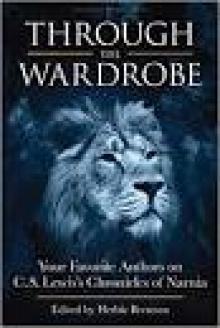 Through the Wardrobe
Through the Wardrobe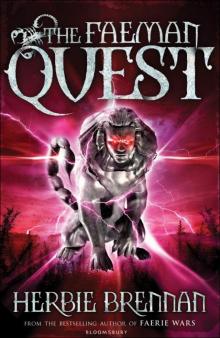 The Faeman Quest fw-5
The Faeman Quest fw-5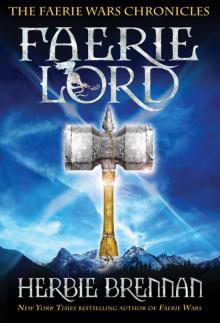 Faerie Lord
Faerie Lord Madame de Gaulle's Penis
Madame de Gaulle's Penis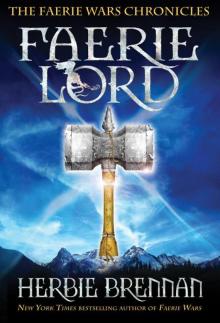 Faerie Lord fw-4
Faerie Lord fw-4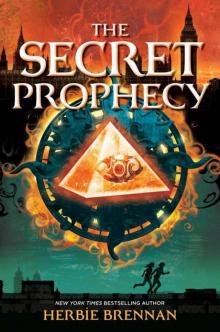 The Secret Prophecy
The Secret Prophecy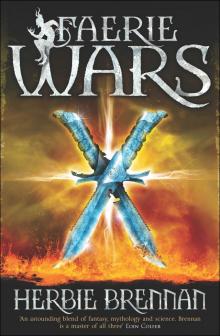 Faerie Wars
Faerie Wars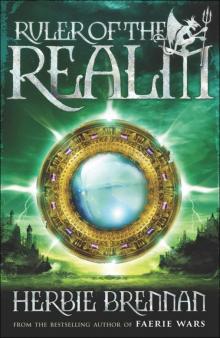 Ruler of the Realm
Ruler of the Realm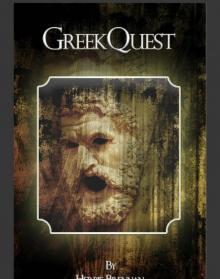 GreekQuest
GreekQuest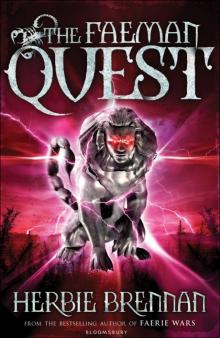 The Faeman Quest
The Faeman Quest The Purple Emperor
The Purple Emperor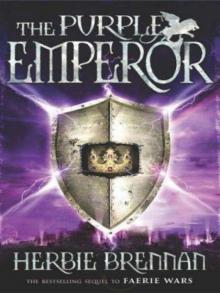 The Purple Emperor fw-2
The Purple Emperor fw-2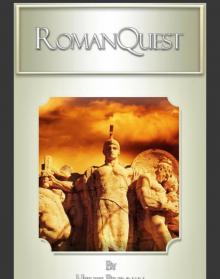 RomanQuest
RomanQuest The Doomsday Box
The Doomsday Box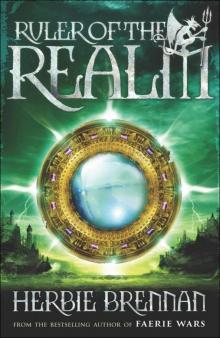 Ruler of the Realm fw-3
Ruler of the Realm fw-3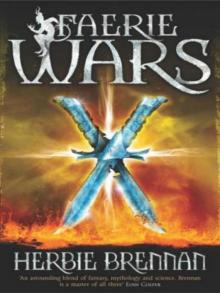 Faerie Wars fw-1
Faerie Wars fw-1